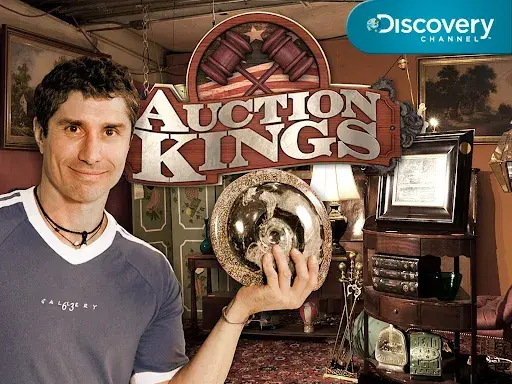When examined more closely, antiquities reveal how incredibly advanced many ancient cultures were

HARWICH, UK – Who isn’t fascinated by relics from civilizations that flourished thousands of years ago? While at first glance some might seem quite primitive and far-removed from present-day art and objects, a closer look reveals quite another story. Often, they show levels of sophistication and imagination that were highly advanced for their time. Here are three items chosen at random from an auction coming up on June 3-7 in England, along with a taste of their back stories. They may change your perception of certain societies of the Mediterranean and Near East, which were actually quite advanced and innovative.
Terracotta Cuneiform Tablet from 2400-2340 BC
Thanks to The Rosetta Stone, which was discovered in 1799 during Napoleon’s Egyptian campaign, archaeologists were able to decipher hieroglyphics that had remained a mystery for several millennia. The Rosetta Stone is a slab of ancient stone that bears identical text inscribed in three different writing systems: hieroglyphic, demotic (common colloquial language), and Greek. Because the Greek text was able to be readily translated, French scholar Jean-Francois Champollion was able to make comparisons and decipher the Demotic and hieroglyphic texts in 1822.
Hieroglyphics are most commonly associated with Ancient Egyptian sarcophagi, statues, vessels and the interior walls of tombs. But they had much more mundane purposes, as well. An Early Dynastic (IIIB, 2400-2340 BC) terracotta administrative cuneiform tablet entered in the auction actually shows that people of that period recognized the need for good record-keeping. Its translation reveals that it was actually a scrupulously-detailed record of livestock ownership. Perhaps the spreadsheet of its day?
The pillow-shape tablet is incised with dense cuneiform text to its two broad faces and one edge, listing 146 sheep and their owners or shepherds, with lines to separate flocks. The fascinating relic was acquired from Laemmle Gallery in Los Angeles in the early 1970s. In 2011, it went to Bonhams, London, and then became part of a private central European collection. The tablet will be auctioned together with a copy of its translated text and copies of relevant Bonhams catalogue pages. Estimate: £15,000-£20,000/$19,390-$25,850
6th-5th Century BC Achaemenid (Persian Empire) Silver Bowl with Royal Egyptian inscription for Darius the Great
Darius the Great knew how to get things done. Born Darius I, he was the third king of the Archaemenid (Persian) Empire, reigning from 522 BC until his death in 486 BC. He was known for his administrative genius and foresight in launching extensive building projects. He is credited with expanding the Persian Empire, organizing it into 20 provinces, and creating both a unified currency and standard system of weights and measures. Also during his time, he directed such major undertakings as the Royal Road and the city of Persepolis.
An important art object in the auction is closely associated with Darius. It is a sizable fragment from a heavy silver bowl created in the 6th-5th century BC, richly decorated with teardrop bosses, lotus-flower and rosette motifs, and most significantly, a hieroglyphic legend that translates to “Darius, Pharoah, the Great.” Was it the king’s own bowl? There’s no way of knowing, but we do know that hieroglyphic inscriptions on Achaemenid items are very rare. Whether it was his property or not, whoever retained this bowl fragment would have been well aware that its significance to future generations would have been in the inscription. The auction estimate is £8,000-£10,000/$10,340-$12,930.
Early Superheroes: The Amazons Who Battled the Ancient Greeks
Ancient Romans had an extraordinary gift for imagination and the artistic ability to turn their musings into tangible objects of exceptional beauty, as seen in one of the auction’s headliners: a Roman Pentelic marble statue of Athena. The goddess holds a shield that is crisply carved with the images of a convoluted snake and depictions of Amazonomachy. In Greek mythology, this term refers to the conflict between ancient Greeks and the all-female Amazon warriors who were known for their physical agility, strength, archery skills and riding expertise – the Wonder Women of their era. Made in the 2nd century AD and modeled in the round, the statue of Athena with the Amazonomachy shield will be auctioned with an estimate of £50,000-£70,000/$64,640-$90,490.
TimeLine’s June 3-7, 2025 auction will be held live at the company’s head office located at The Court House, 363 Main Rd., Harwich, Essex CO12 4DN, UK. All lots featured in TimeLine’s hardcover catalogue will be auctioned during the June 3 opening session. Internet bidders may pre-register online. Goods may be previewed in person at the gallery by prior arrangement only.
Auction start time: 7am US Eastern time/12 noon GMT. All remote forms of bidding will be available, including absentee, by phone (please book phone line 48 hours ahead of time), or live via the Internet through TimeLine’s bidding platform or LiveAuctioneers. TimeLine Auctions accepts payments in GBP and ships worldwide. Questions: call +44 7494 866514 or email Aaron Hammond at [email protected]. Online: https://timelineauctions.com.









